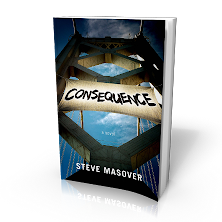There's a lot of down-time in artists' studios, waiting for ink or paint to dry, for a photo emulsion process to work its magic, for the worst of a hangover to pass -- all manner of idle moments. These are often the times when ideas blossom. For J-- and I, they were often when we'd engage in theo-philosophical discussion about How Everything Relates To Everything Else, a discussion that has continued over the course of more than three decades.
We haven't arrived at any conclusive answers yet. On the other hand, we haven't tired of the topic!
One day in his SFAI studio, in the heat of a passionate theo-philosophical discussion about How Everything Relates To Everything Else, J-- applied his gift for drawing to a sketch of our emerging ideas on a scrap of paper. I have wished again and again since that we'd kept that sketch, though I suppose J-- could reproduce it, conceptually at least, without breaking a sweat. Me, not so much. I tried this weekend, the result was laughable. I'm reduced to describing the concept in words.
The answer of that moment -- to the question, How does everything in the world relate to everything else? -- had to do with everything being connected to everything else because everything is a manifestation of the same underlying substance and/or spirit of the world.
Got that?
There may have been some contested details in that "and/or," but I honestly can't remember who took which side of which exact issue. J-- and I have regularly switched apparent-positions over the decades. It's always been about convergence.
Anyway, J--'s drawing was of a partial arc of the earth, the surface of which (okay, the circumference, two-dimensionally-speaking) sprouted people, trees, flowers, animals, and all manner of other living beings (and perhaps some inanimate ones as well, or maybe that came into the picture later on) -- each of which was rooted in and (graphically speaking) open to the same underlying, universal mass of everything. As if everything that exists were a thought bubble of the same stuff and/or consciousness.
You could call this "same stuff" Wuji (無極), or Puruṣa (पुरुष), or Chaos (χάος), depending on your theological or philosophical frame of the moment. At one time or another, J-- and I probably called it each of these and more.
But, you may wonder, why am I moved to take this trip down theo-philosophical memory lane?
 Tolstoy, of course.
Tolstoy, of course.Here's the moment in the history of One Finger Typing when I can announce, at long last, that I have finished reading War and Peace. I finished a couple of Sundays ago, on February 26th -- about fourteen months after I began with the intent to finish the epic novel in a single year. (I'll likely come up with another post or two about this sprawling, magnificent, imperious work in the fullness of time, to round out the posts published to-date and linked below.)
So there was an episode in War and Peace that got me to thinking about hanging out at the SFAI with J-- in the early eighties, and about a major vein of what we've talked about, written, and sketched since. The episode is a half-dream sequence in the mind of Pierre, a.k.a. Count Pyotr Kirillovich Bezukhov, in which "the events of reality combined with dreams," as the author sets the scene. The passage takes place during Pierre's forced march as a prisoner of war captured by Napoleon's now-retreating army. It's the night after the execution of a fellow-prisoner, Karataev, who became too weak to march. From Volume IV, Part Three, Chapter XV:
And suddenly a long-forgotten, meek old teacher, who had taught him geography in Switzerland, emerged in Pierre's mind as if alive. "Wait!" said the old man. And he showed Pierre a globe. This globe was a living, wavering ball of no dimensions. The entire surface of the ball consisted of drops tightly packed together. And these drops all moved and shifted, and now merged from several into one, now divided from one into many. Each drop stove to spread and take up the most space, but the others, striving to do the same, pressed it, sometimes destroying, sometimes merging with it.
"This is life," said the old teacher.
"How simple and clear it is," thought Pierre. "How could I not have known before?"
"In the center is God, and each drop strives to expand in order to reflect Him in the greatest measure. It grows, merges, and shrinks, and is obliterated on the surface, goes into the depths, and again floats up. Here he is, Karataev, see, he spread and vanished. Vous avez compris, mon enfant?" said the teacher.
Tolstoy, the San Francisco Art Institute, Napoleon, too many gin and tonics, a sketch inked on a scrap of paper, Vishnu, war, Switzerland, mysticism, peace ... everything, you see, relates to everything else.
Don't you think?
Thanks to Matthew Felix Sun for his image of John Harrison's Electric Eye, photographed hanging in a gallery adjacent to where I drafted this blog post, a.k.a. La Cuisine de mon Appartement.
Related posts on One Finger Typing:
Opera for the Neophyte in War and Peace
Tolstoy on 'hidden histories'
Slow reading: Tolstoy's War and Peace





I know that there are endless references that relate to these ideas, but one that I really connected with was Christopher Alexander's last book which delves into the spiritual aspects of design. He describes an underlying 'ground'. Beautiful design/writing/art remove the filters that otherwise obscure our view into that splendor. There's a humility implied here. We can't actually hope to 'create' something beautiful. We can only aspire to facilitate access to the beauty that is everywhere, but that remains somehow unseen.
ReplyDelete